ChatGPT Detection: Everything You Need to Know
ChatGPT content is all over the internet. Read and learn about the telltale signs of AI text that make ChatGPT detection possible.
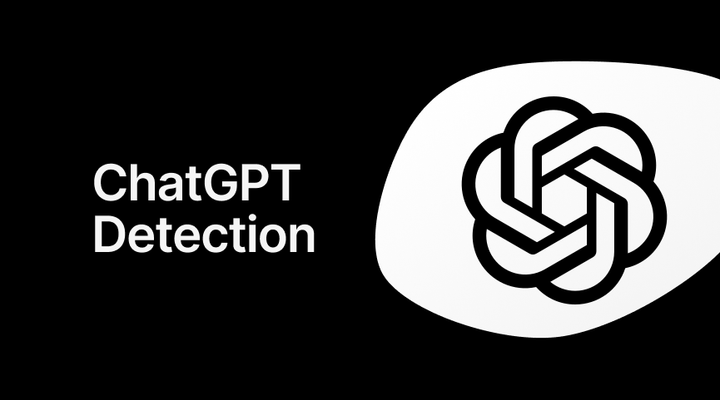
AI started becoming ubiquitous within professional circles in 2022 with the launch of ChatGPT, and fast forward to today, AI is literally everywhere.
You’ll witness the use of ChatGPT generated text in almost all facets of the internet. Google something and you’re sure to find AI-written articles. Open a social media post, and the caption is AI. Even comments under those posts are sometimes AI.
Despite AI-generated content being so common, most people have no idea about it. Part of the reason is that it doesn’t matter to most people. But a major reason is that many don’t have the acumen to distinguish between AI and human-written text.
AI detection tools have now solved this ChatGPT detection problem, thanks to the telltale AI patterns in its responses.
Read this article to understand how ChatGPT generates content and which of its weaknesses pave the way for easy ChatGPT detection.
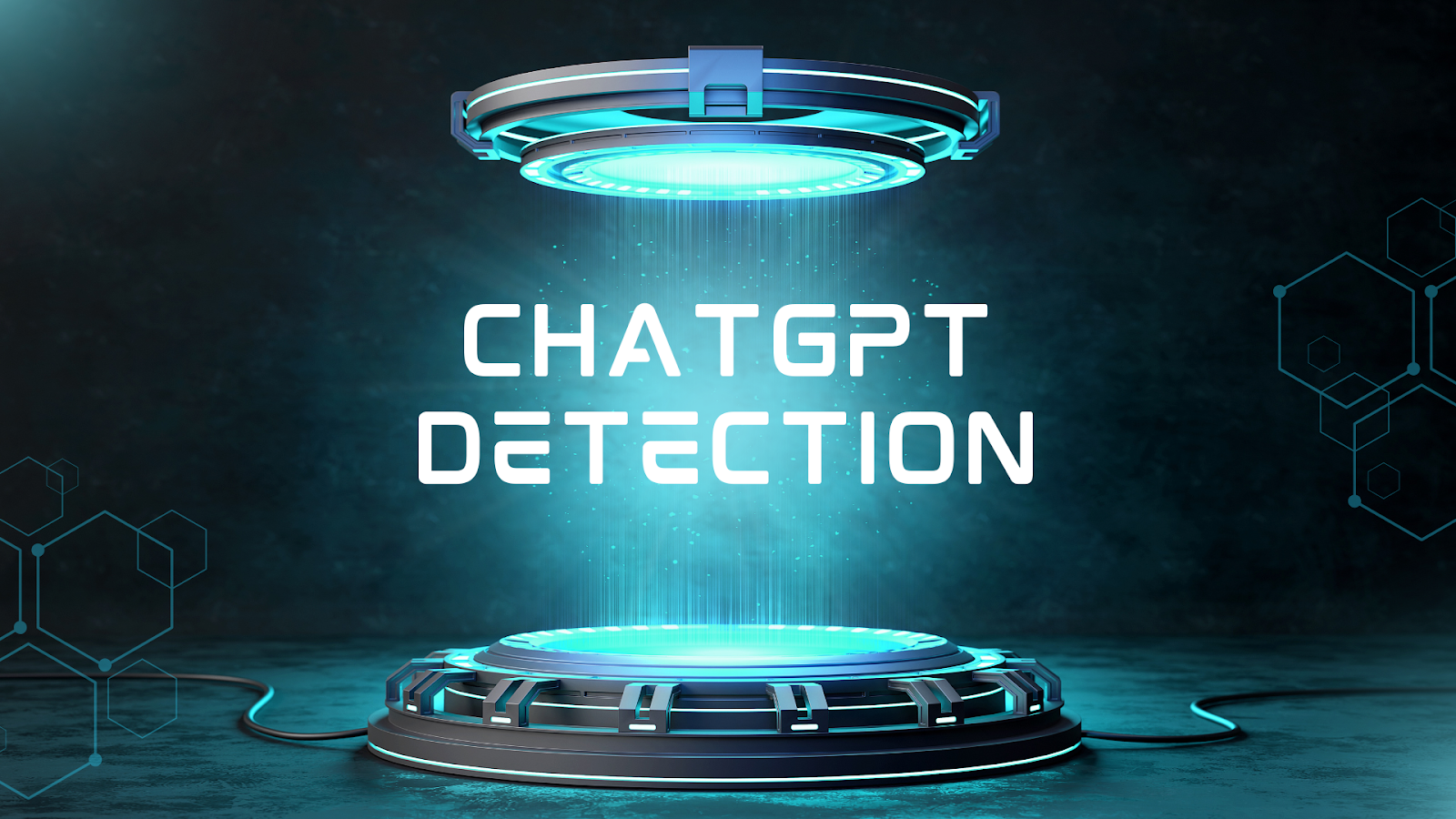
What is ChatGPT and How Does it Work?
ChatGPT is a generative AI chatbot created and launched by OpenAI in late 2022. Since its launch, it has been one of the most widely recognized applications of artificial intelligence to the point that most of the general public calls it the face of AI.
After all, it was ChatGPT’s release that contributed heavily to the ongoing AI boom and influenced the creation of similar chatbots from competitors like Google’s Gemini (formerly Bard) and Anthropic’s Claude.
Today, as of October 2025, ChatGPT’s website ranks as the 5th most visited site worldwide, according to data from Semrush and Similarweb.
The chatbot allows users to interact with OpenAI’s large language models (LLMs) via prompts, which can be text, audio, or images. In return, ChatGPT can generate responses in the same formats, depending on the user’s demand.
ChatGPT can perform the following tasks for users:
- Writing and debugging code
- Drafting essays, articles, and creative works
- Answering questions, including test-style queries (sometimes above human averages)
- Translating and summarizing text
- Simulating systems or games (Linux commands, chat rooms, tic-tac-toe, etc.)
- Brainstorming business ideas or strategies
But how does ChatGPT come up with its responses?
Broadly speaking, it goes through two stages:
- Language understanding: When a user enters a prompt, ChatGPT first converts that input into a numerical representation through a process called embedding. You can think of embeddings as turning words into numbers that capture their meaning, so the model can recognize that “happy” is closer to “joyful” than “sad.” Using these numerical patterns (embeddings), ChatGPT tries to understand both the semantic and syntactic meaning of the user’s prompt.
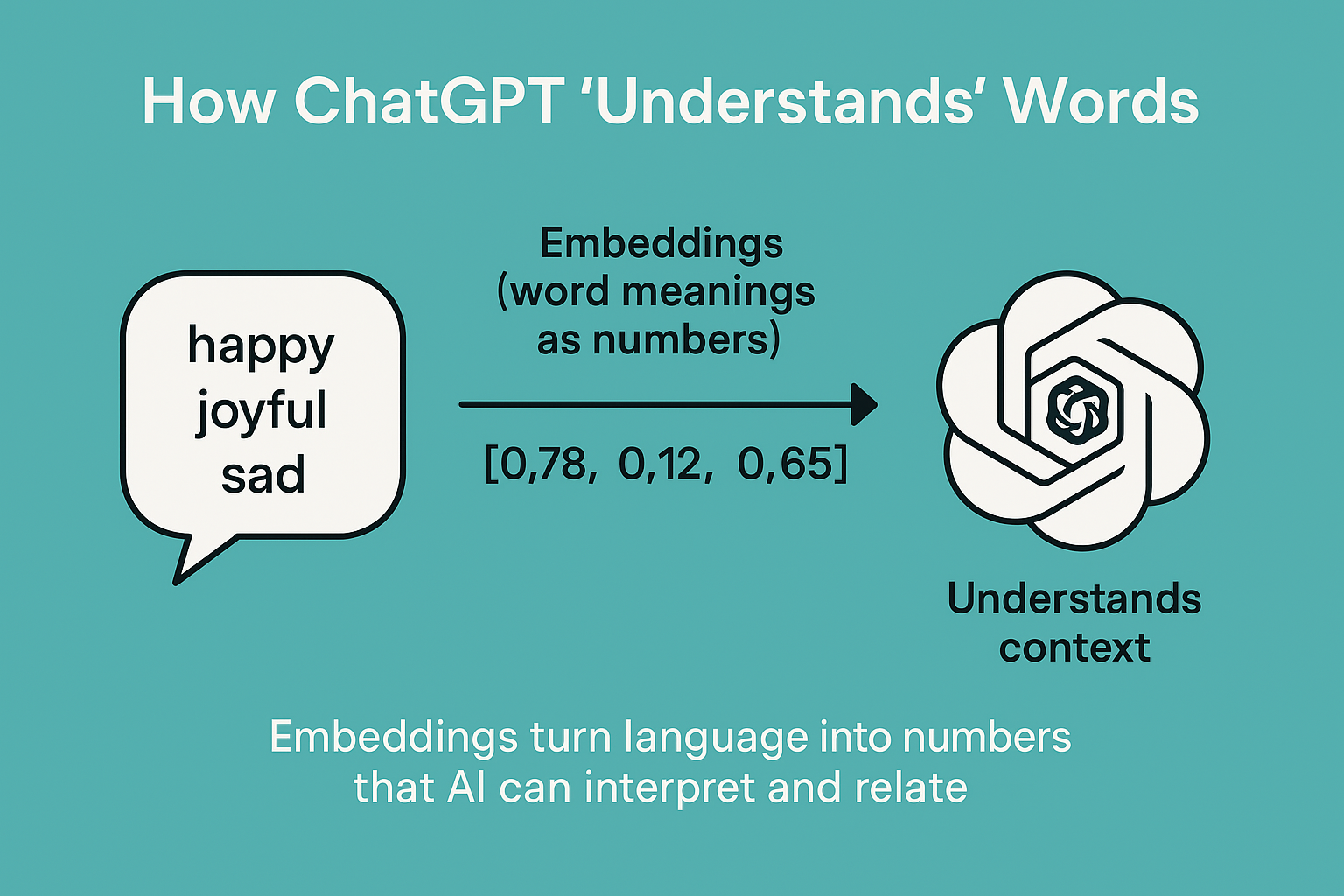
- Response generation: After embedding, the input is combined with prior conversational context. The model then predicts the most probable next word, one token at a time, until a full response is formed.
Strengths of ChatGPT
Here are some of the strengths that you will come across when using ChatGPT.
- Comprehensive knowledge: ChatGPT’s training on a massive amount of information helps it dish out information on any topic you throw at it, regardless of the topic’s complexity.
- Precision in language: ChatGPT has a wide vocabulary and flexible grammar structures, which help it provide responses that are both logical and contextually rich.
- Information retrieval: The model can fetch relevant details from the massive library of books, articles, papers, websites, and other sources of information it’s trained on. At the same time, it also keeps learning from its interaction history with you to gauge your preferences and intent in order to produce more satisfying responses.
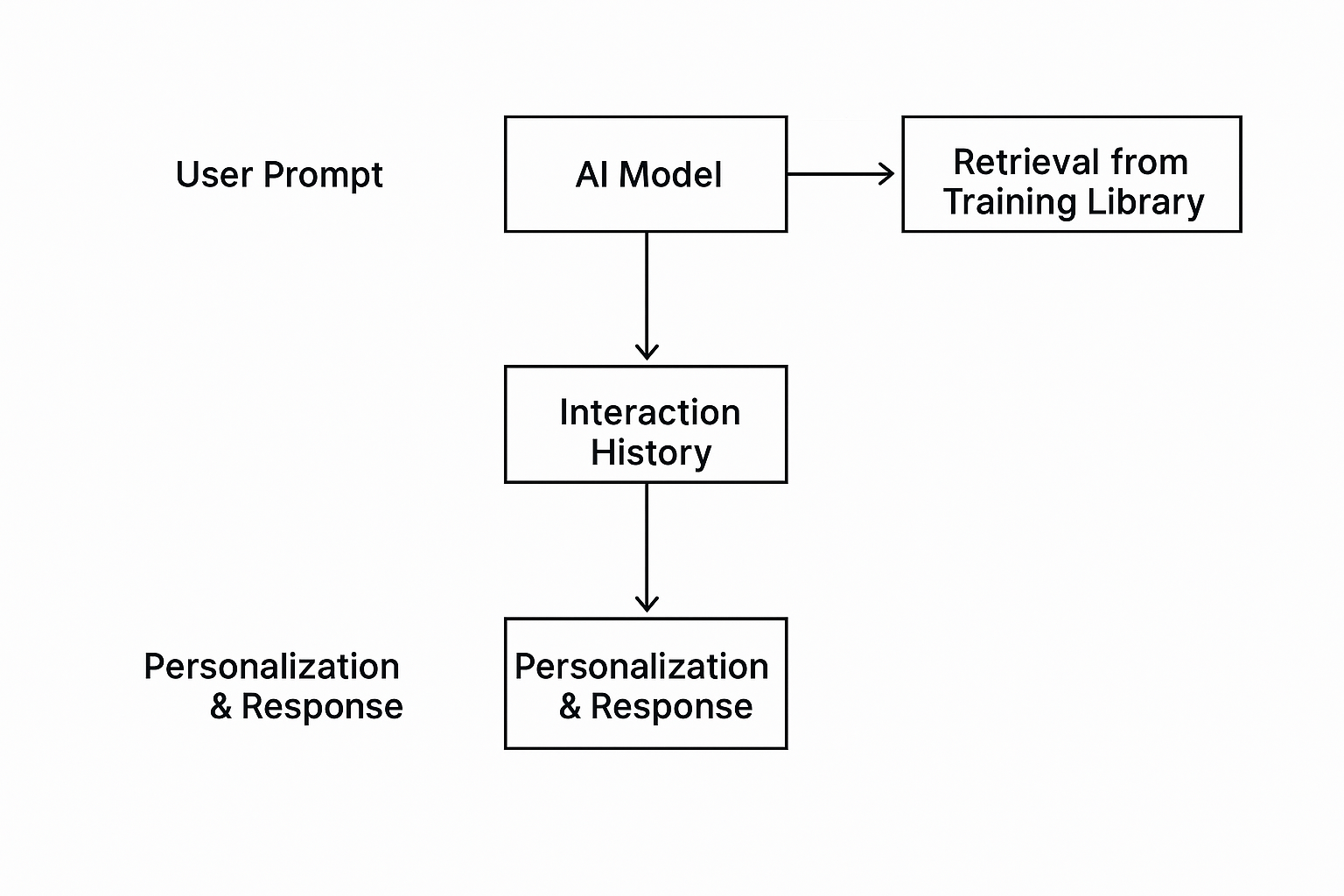
- Domain-specific specialization: ChatGPT allows users to customize the model into a specialist in a specific domain or project.
Weaknesses of ChatGPT
Below are some of the weaknesses of ChatGPT.
- Limited knowledge of recent events: ChatGPT has a knowledge cut-off date. The knowledge cutoff date is the point in time after which the data used to train it stops. Anything that happened after that date isn’t part of its training. You can bypass this using ChatGPT’s web search feature, but its core knowledge and reasoning are still based on everything available up to the knowledge cutoff time.

- Weak contextual understanding: ChatGPT’s understanding is built only on two sources: your prompt and its training data. If either is thin or unclear, the model can produce responses that miss the mark.
- Hallucination: Every so often, ChatGPT makes things up. This phenomenon, known as “hallucination” occurs when the model confidently presents nonsense or fabricated facts as its way of filling in the blanks due to a lack of clear information on a subject.
- Detectable writing patterns: Despite massive improvements over the years, ChatGPT’s writing often leaves behind identifiable traces, which you can call AI artifacts. It can include unnatural sentence rhythm, overly balanced structure, excessive coherence, and limited lexical variety. The way human usually writes shows more randomness, emotion, and inconsistency, which AI detectors like GPTZero can identify with high accuracy.
- Overuse of certain words, phrases and sentence structures: Words like “dive”, “unravel”, “unlock”, “landscape”, “magic”, “showcasing”, and many more; phrases like “today’s fast-paced world”, “It’s important to note”, “Think of it like”, excessive use of em dashes, etc; the rule of three sentence structure among others, are all unhealthy obsessions of ChatGPT that somehow pop up no matter how good of a prompt you write.

Now, the question is “Can ChatGPT be detected with accuracy?”
Can ChatGPT be Detected?
As the leading AI detector in the market, we can confidently say that yes, it’s possible to detect when text is written by ChatGPT, and we do that all the time.
Even people who’ve spent a lot of hours generating text with ChatGPT, with an eye for quality, naturally start spotting common writing patterns used by ChatGPT.
But since not everyone has the time or experience to be that person, ChatGPT detection is best left for AI content detectors like GPTZero.
AI content detectors run text through advanced algorithms to spot telltale AI ways of stitching sentences together by comparing the text against massive datasets of both human-written and AI-generated content.
Sometimes, people make manual edits to ChatGPT-generated content to make it sound human. But our advanced ChatGPT detectors can catch that too.
We asked ChatGPT to explain blockchain in simple terms. The explanation was good, and the language had a seemingly human flow. Take a look:
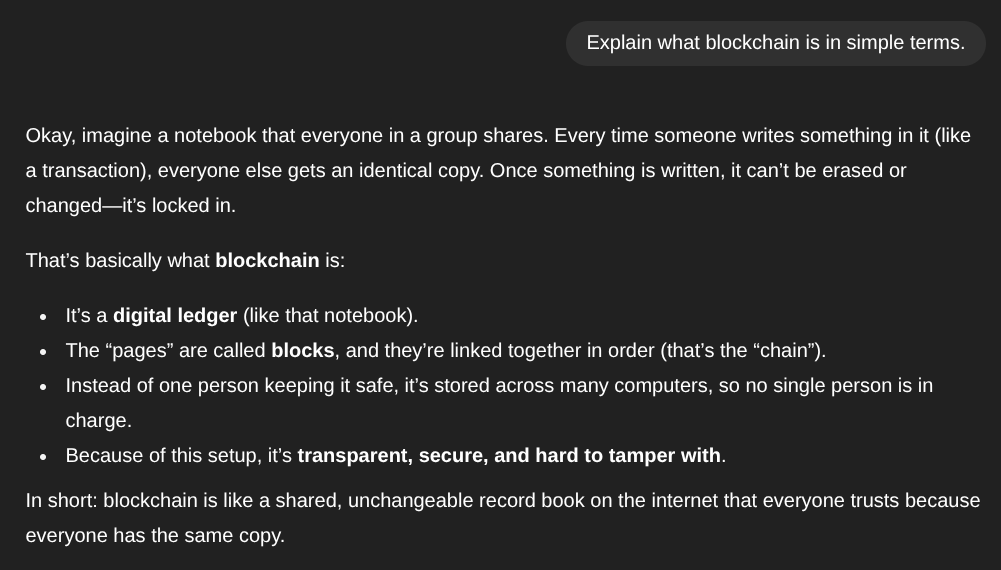
Can anyone recognize if ChatGPT was used in the text above (if shown as plain text without the UI giveaway)? A layman won’t be able to tell that ChatGPT generated this text. But run the same text through GPTZero and see how it confidently detects it as entirely AI.
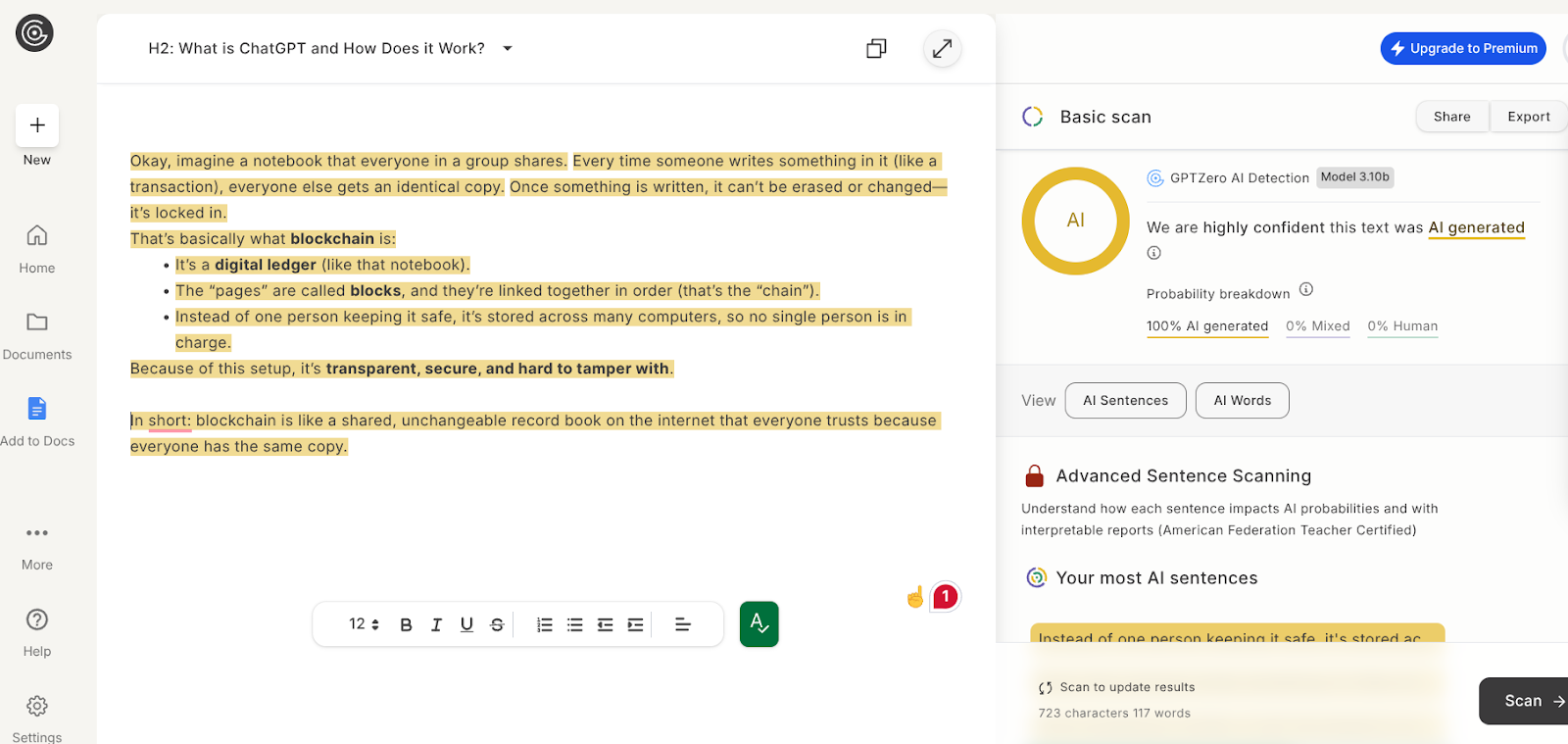
How Do ChatGPT Detectors Work and Are They Even Accurate?
AI content detectors use the same techniques that make ChatGPT possible in the first place, but flip the purpose.
Where ChatGPT uses machine learning (ML) and natural language processing (NLP) to generate content, AI detectors make special techniques using these methods to tell apart human and AI text.
Take GPTZero as an example. We were one of the first to use perplexity and burstiness as signals for AI detection.
Both of these are metrics that work in tandem to detect AI text.
Perplexity analyzes the text for signs of randomness. When a text is purely human, it has a certain randomness to it. You’ll see unusual word choices, sentence structures, nuanced points, and whatnot.
Simply put, there’s little to no predictability when humans write something. When this is the case, the perplexity score is high.
AI-generated text, on the other hand, is predictable due to the weaknesses we went over and thus has a low perplexity rate.
Perplexity measures things at a word and sentence level.
Burstiness looks at the overall text and examines whether this perplexity also varies or if it just occurs formulaically only. And similar to perplexity, the burstiness score should also be high if the text is human-written. Otherwise, it’s low.
These are just two measures of AI detection. GPTZero has expanded far beyond into a seven-layered model that cross-examines text in more dimensions.
But what about the accuracy of such advanced ChatGPT detection models?
As a start, you should know that no detector, ours or anyone’s, can legitimately claim 100% accuracy. That’s just not how this works.
What we can do, instead, is keep accuracy as high as possible while minimizing false positives and false negatives.
That’s what we did. GPTZero maintains a 99% accuracy rate with only a 1% false positive rate when detecting AI.
Even with mixed texts that are part human, part AI, GPTZero consistently performs better than our competitors by scoring a 96.5% accuracy rate.
Learn how our benchmarking works for more details on these scores.
The Growing Need for AI Detection
A study by the National Bureau of Economic Research (NBER) from September 2025 investigated how people have used ChatGPT from its launch through July 2025.
It found that writing is the No.1 work-related task that people outsource to ChatGPT.
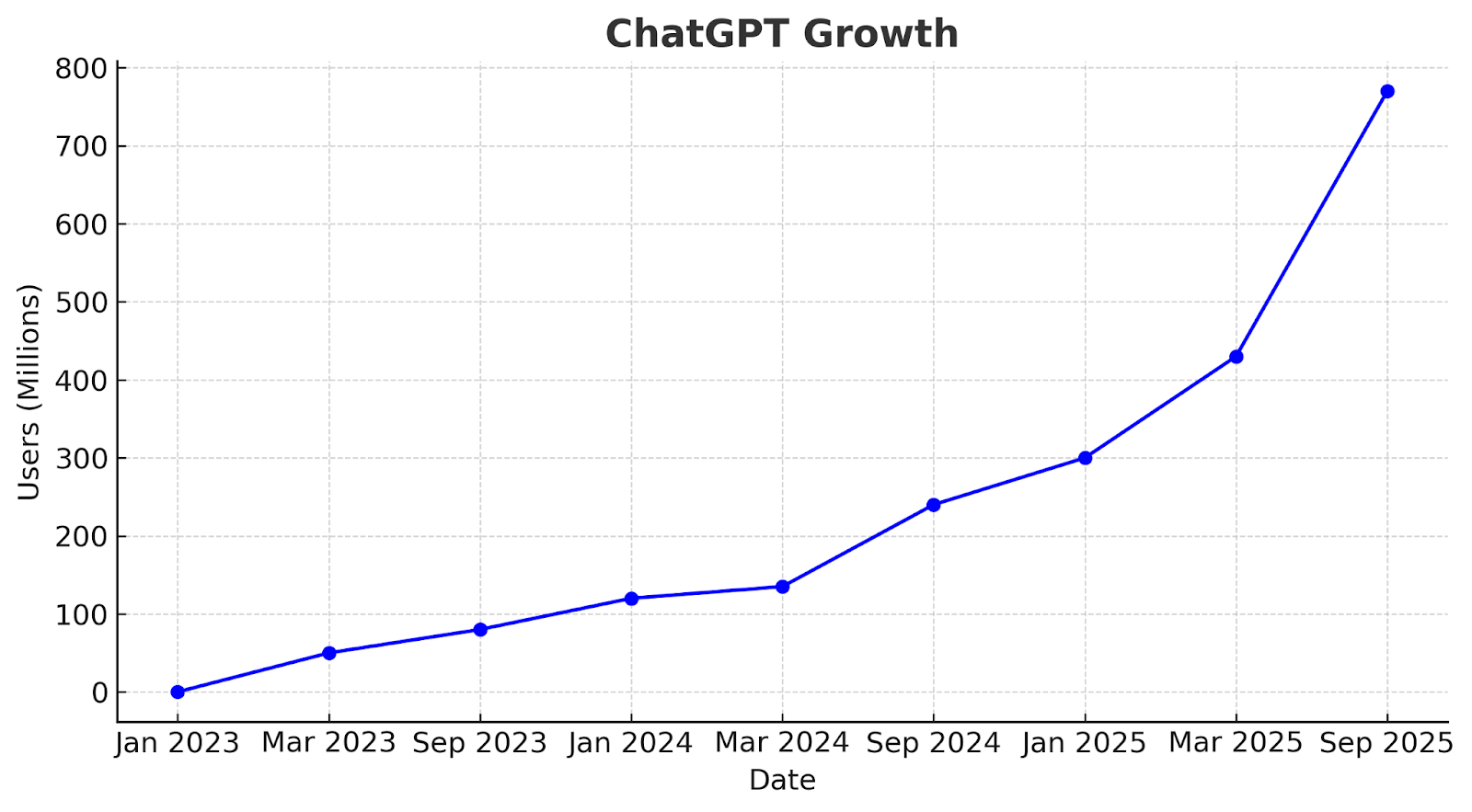
According to the study, writing makes up 42% of all work-related messages overall and more than half of all messages for users in management and business occupations.
The research breaks it down further and mentions the following five sub-categories within writing, listed in order of frequency:
- Editing or critiquing the provided text
- Personal writing or communication
- Translation
- Argument or summary generation
- Writing fiction
But how does any of this highlight the need for AI detection?
These trends show us that AI is increasingly shaping what people submit, and this is only going to rise in the future.
At the workplace, emails are ChatGPT written, in the classroom, it’s entire essays and homework, in the media, it’s new stories and articles. Like we said in the beginning, AI is now everywhere.
It’s one thing to use ChatGPT for personal recreational purposes. But when its usage seeps into formal and professional domains, that too heavily, the trust in writing as a medium goes under question.
That’s why the need for a way to know where the human ends and the AI begins becomes necessary, not for punishment purposes, but to uphold quality and integrity. In the matter of education, it is necessary to make sure students aren’t outsourcing learning.
FAQs About ChatGPT Detection
Can ChatGPT actually be detected?
Yes. AI detectors like GPTZero can easily detect ChatGPT writing with high accuracy. Even when ChatGPT text is altered to make it sound human, AI detectors, like GPTZero, catch the parts with different degrees of AI footprint and highlight them with appropriate colors. You can try to manually spot AI patterns in a text, too, but that’s a long hassle and requires skill.
How do I make sure ChatGPT is not detected?
To make sure ChatGPT is not detected, you can limit its use to just a brainstorming partner or to generate rough drafts. You can then take those ideas and write in your own voice without having to start from scratch. When words are originally yours, you won’t have to worry about ChatGPT detection in the first place.
Is it possible to check if something was written by ChatGPT?
Yes, it is indeed possible to check if something was written by ChatGPT. You can head to GPTZero’s free AI detector and paste your text. Within seconds, GPTZero will tell you how much of the text is AI, human, or a mix of both.
